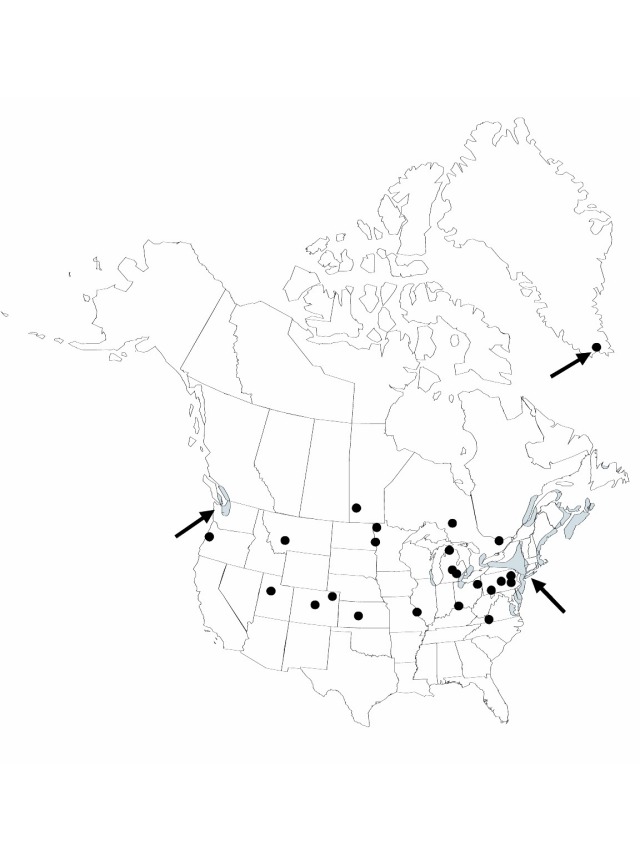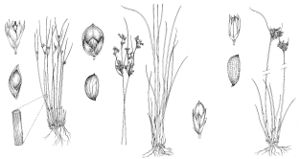Juncus gerardii
J. Bot. (Desvaux) 2: 284. 1809.
Herbs, perennial, 2–9 dm. Rhizomes long- creeping. Cataphylls 1–3. Leaves basal, (1–)2–4; auricles 0.4–0.6(–0.8) mm, scarious; blade flat or somewhat channeled, 10–40 cm × 0.4–0.7 mm, margins entire. Inflorescences 10–30(–80)-flowered, usually loose and somewhat lax, 2–16 cm; primary bract rarely surpassing inflorescence. Flowers: bracteoles 2; tepals dark brown or blackish, lanceolate-ovate to oblong, 2.6–3.2(–3.8) mm; inner and outer series nearly equal, apex obtuse; stamens 6, filaments 0.4–0.7 mm, anthers 1.1–1.6(–1.8) mm; style 0.4 mm. Capsules chestnut brown or brown, 3-locular, widely ellipsoid, (2.2–)2.5–3.2(–3.5) × 1.3–1.9 mm. Seeds dark brown, ellipsoid to lunate, 0.485–0.6(–0.67) mm, not tailed. 2n = ca. 80, 84.
Phenology: Flowering and fruiting late spring–summer.
Habitat: Forming extensive colonies in exposed coastal estuary meadows and salt marshes just above high- tide line, also inland
Distribution

Greenland, St. Pierre and Miquelon, B.C., Man., N.B., Nfld. and Labr. (Nfld.), N.S., Ont., Oreg., P.E.I., Que., Colo., Conn., Del., Ill., Ind., Kans., Ky., Maine, Md., Mass., Mich., Minn., Mo., N.H., Mont., N.J., N.Y., N.Dak., Ohio, Oreg., Pa., R.I., Utah, Vt., Va., Wash., Wis., Europe, Asia.
Discussion
Selected References
None.
